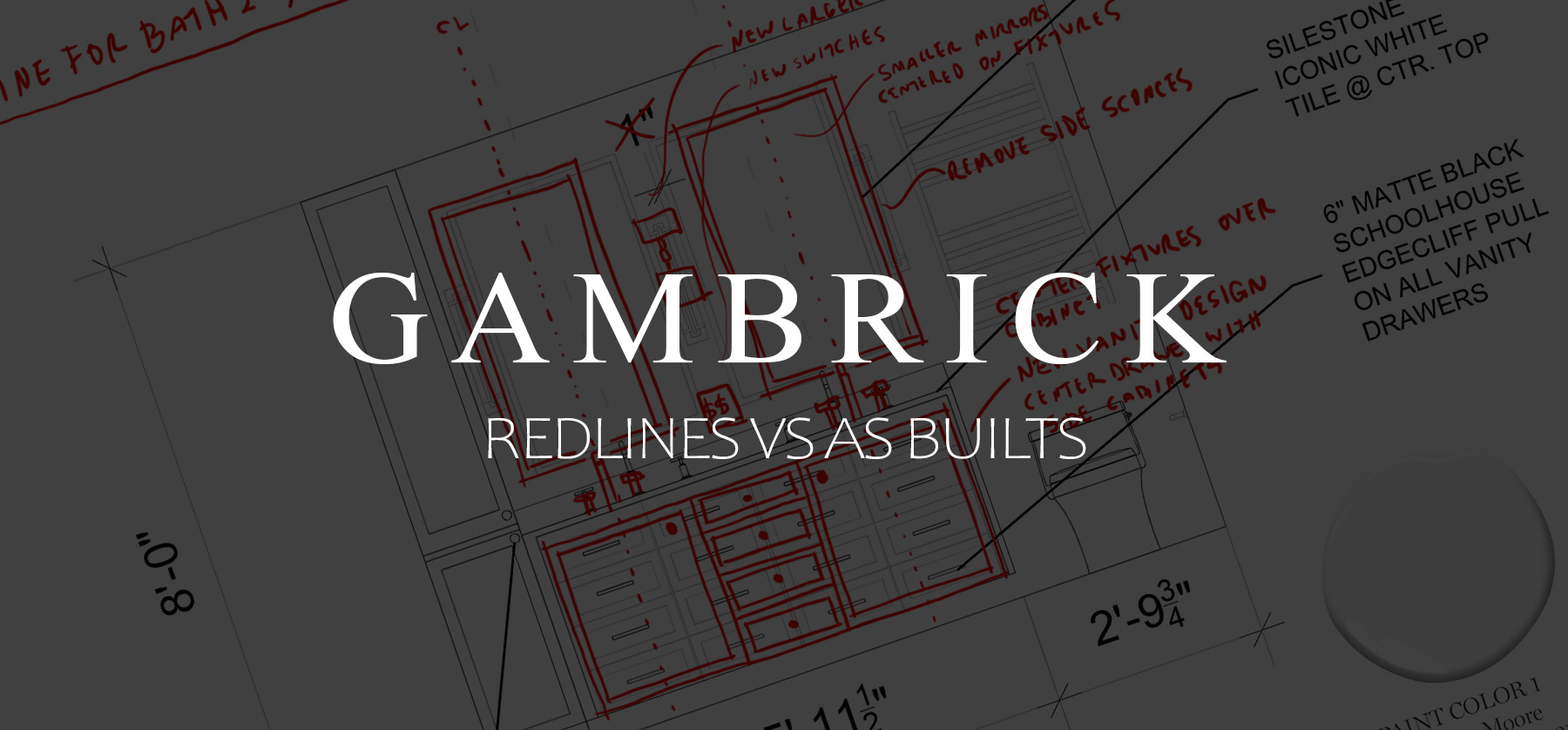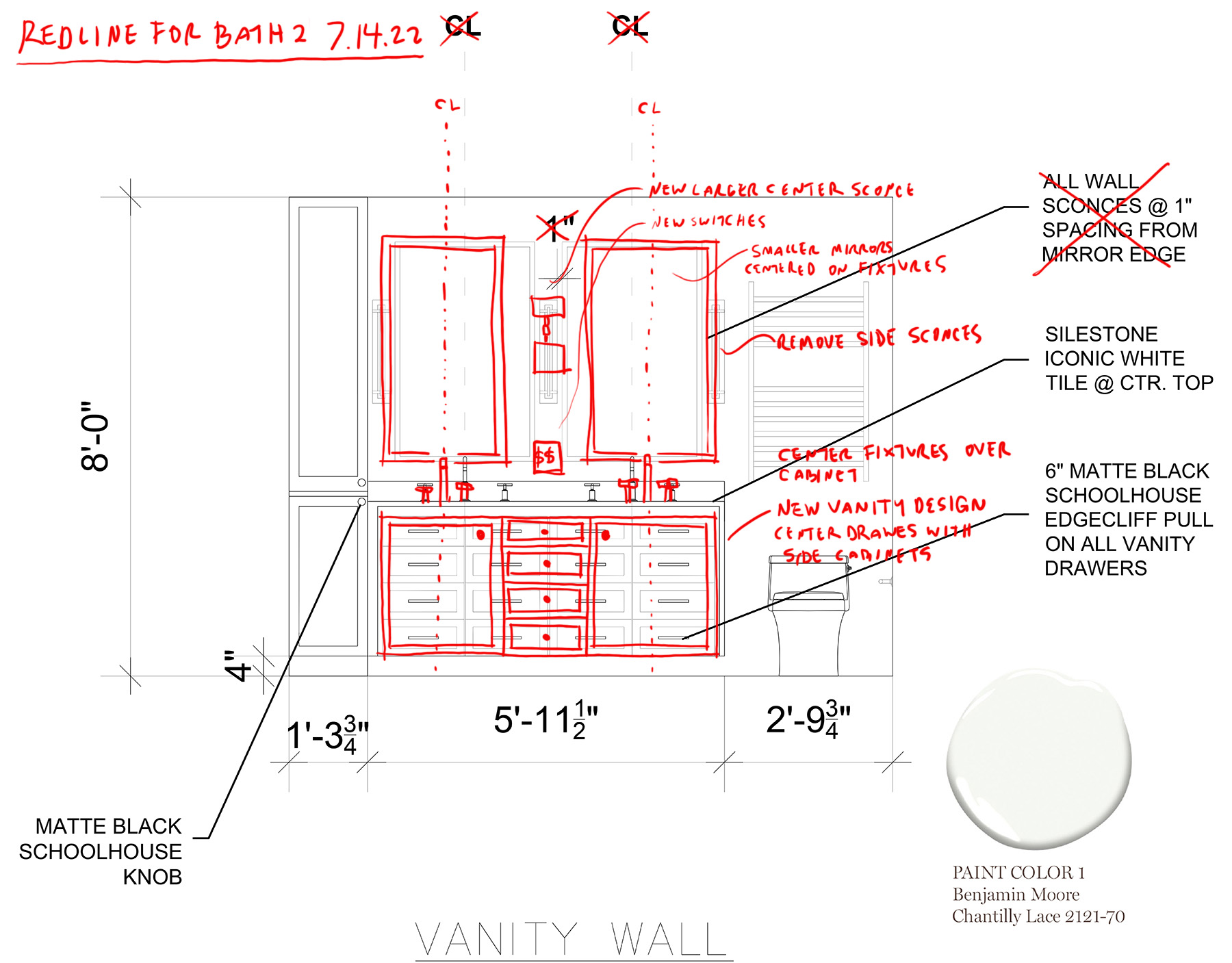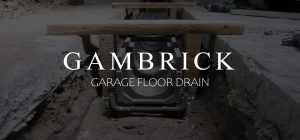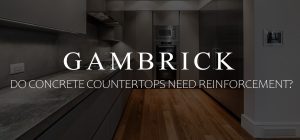Redlines Vs As Builts
Redlines are original blueprints with changes marked in red ink. When builders like myself build or remodel a structure, we follow a set of drawings prepared by an architect or engineer. As we do our work, changes to the project are often made. These changes are drawn on top of the original plans in red ink to document every change that’s made. Since blueprints generally don’t use red ink, the changes stand out. The term “Redlining” simply means drawing on top of a blueprint in red to show changes. “Redlines” refers to blueprints that have been drawn on. As builts are new plans which show how the structure is actually built. They include all the changes outlined on the redlines. When comparing redlines vs as builts its important to understand that redlines are done by the builder while as builts are drawn by the architect or engineer.
Once we’re done making changes to the project, which are all outlined on the redlines, we give them to our architect or engineer. Based on the redlines, and usually a site inspection, they prepare a set of as builts. Usually as builts are then given to the building department for an updated permit. Building departments will accept as builts which are stamped and approved by an engineer or architect but they won’t accept redlines.
Redlines are not an official set of plans. They’re drawings which show changes that are drawn on top of official plans. But as builts are official plans. They’re prepared and stamped by an architect or engineer to show exactly how a structure is built. As builts show the entire structure including all the updates. Essentially, as builts are an updated set of blueprints that reflect the changes shown in the redlines.
What Are Redlines?
Redlines are original blueprints with changes to the project drawn in red.
Blueprints show exactly how you should build a structure. They detail sizes, dimensions, setbacks, heights, lumber, steel, foundations, framing, windows, doors, finishes, etc. Every time we make a change to the blueprints, we outline the changes in red ink.
Whenever we make changes they must be documented so we can show them to the architect or engineer for approval. Based on those changes, and usually a site inspection, they prepare an as built plan. It’s important to draw all the changes you make on the blueprints so they can be seen by everyone involved in the project.
Redlines should include not only new layouts but also specifications. Detail any change you make no matter how minor so the architect or engineer can review them. Any change is specifications you make on the job should be outlined on the redline drawing.
In some cases the changes you make may not be to code. In this case the architect or engineer will tell you what you need to do in order to bring the structure back to compliance. For this reason, I recommend limiting your changes to minor things that won’t violate a building code.
For example, moving a door or window a few inches should be shown to the architect in a redline drawing, but usually won’t create a code violation.
What Are As Builts?
As-builts are drawings and specifications that show how a building is actually built. They’re basically an updated set of blueprints drawn by the architect or engineer which combine the original blueprint with the changes you’ve made and outlined in the redline drawing.
As built plans will be included in the “final set” of drawings and specifications that are provided to the owner and building department.
There are a few ways redlines become as builts.
- The builder may require each subcontractor to create as builts for their portion of the project with specifications. Here in New Jersey, many mechanical subcontractors prepare their own plans so updates are done by them, not an architect.
- Some builders have subcontractors issue redlines instead of as builts. They then take all the redlines and create a new plan showing all the mechanical work on one plan. This helps on large scale projects with lots of subs because everyone works from one master set of blueprints. On these types of jobs subcontractors generally don’t prepare their own plans so redlines work better.
Whichever way you do it, all changes made to a project are ultimately shown on an as built plan.
As a custom home builder, I prefer the subcontractors make redlines for me to review before making as builts. I want to see and approve each change before they actually do the work. Redlines are cheap and easy to make but as builts take more time which costs money. And if I don’t approve the change they have to redo the work which wastes even more time and money.
It’s best to go through the redline process first before you move to as builts.
Are Redlines And As Builts The Same?
Redlines and As builts are definitely not the same thing.
Redlines are blueprints which have changes drawn over top in red ink. But as builts are official updated plans which show all the changes made during construction.
Redlines are not an official set of plans and can’t be used to obtain updated permits. But as builts are. If you make changes substantial enough to require an updated building permit, you’ll need a set of as builts which are drawn and approved by the architect or engineer.
Another difference is that redlines can be made by each subcontractor which often have their own set of plans. This is very common with mechanical contractors. But this can create problems because other contractors will be working off the official blueprints and may not see a subcontractors redlines. It can create problems when subs aren’t working off the same plans. This is why on bigger jobs I prefer as builts.
The strategy that works best for me is to have an official set of blueprints on the job at all times with redlines on it. When mechanical subs make a change on their plans, they show it to me for approval before they do the work. If I approve the change I detail it on the jobs official plan as a redline. This way every other subcontractor working on the project can always look at the official blueprint and see every other subs redline changes.
What’s The Difference Between Redlines And As Builts?
Redlines are blueprints with changes drawn on top in red. They can be made by a subcontractor or the builder. Every change anyone makes from the original blueprint should be detailed in a redline drawing.
As builts are an official updated set of blueprints that show the original design along with all the changes made.
Redlines are not an official blueprint but as builts are. For example, if you make a change that requires approval by the building department, you’ll need an as built not a redline drawing. Redlines are a way to show the architect or engineer changes that have been made so they can update the plans in the form of an as built.
Redlines comes first to document any changes made to a blueprint. As builts come second to make changes outlined in the redline drawing an official part of the blueprint.
What Are Architectural Redlines?
Architectural redlines are different than the redline drawing a builder or subcontractor makes.
“Redlines” is the term used by an architect in reference to the red ink that’s used to mark up corrections that need to be made on architectural drawings. When an architect reviews a set of blueprints, they make all they’re corrections, additions and changes in red ink.
In most architect offices there are junior architects and draftsmen preparing plans. But those plans are then reviewed by a more senior architect. Any changes, corrections or additions the senior architect makes are written in red ink and then handed back for an update. This may happen several times before a set of plans is finally approved and stamped.
A set of blueprints may also be reviewed by a staff engineer before final approval. The engineer will review a set of blueprints and make their changes, alterations and additions in red ink. Then plans are then sent back to the architect for an update.
In many cases, redlining a drawing has nothing to do with mistakes. Instead, they’re changes or additions the architect wants based on the layout or overall design. Architects do more than just draw structures according to code. They’re designers and very artistic which can be reflected in the redline drawings.
Redlines are typically the last chance for an architect to review a set of plans and make changes before they’re stamped and sent out to the client. Any final notes, thoughts and ideas will be drawn on the redlines and then transferred to the final set of blueprints.
What Are Redlines On An As Built Drawing?
Redline drawings are errors, changes, updates, additions and revisions that are drawn on a set of blueprints in red. The markups are usually done in red ink to make them easier to see because plans are not drawn in red. Hence the name Redline Drawings. Typically, redlines are drawn on the original blueprint, then given to the architect to approve and prepare an as built plan. The as built is a blueprint that shows how a structure is actually built which includes the original plan plus all the changes shown in the redlines.
Redlines on an as built drawing are changes made after the as built is complete. Once an as built is stamped and approved, it becomes the official blueprint for the job. Builders don;t use the original plan once an as built is done because it’s not the most recent up to date plan. But changes can still be made after the as built is done.
Changes, additions, revisions, etc that are done after the as built is done are written in red on the new as built plan. Then they’re given back to the architect again for a new as built. This cycle can repeat a number of times before a large job is complete.
The Benefits Of As Builts
As built drawings are an essential part of construction when changes are made to the original set of blueprints. Everyone subcontractor on the job as well as the builder, architect, inspectors and engineer need to work off an accurate plan that reflects not only how the structure should be built, but also how it is actually built.
I’ve been a builder for over 20 years, and I’ve never worked on a single home or building where changes were not made. Dealing with changes to the job scope is a part of being a contractor and those changes must be documented. The first step is a redline drawing followed by an as built.
- They help future workers understand mechanical systems and how they’re run throughout a structure.
- Help eliminate mistakes because everyone is working off the same up to date and accurate plan.
- They’re an official record for Clients, Consultants, Inspectors and future Builders.
- They help with future operation and maintenance work.
- Up to date and accurate plans provide a basis for future upgrades or repairs.
Every job should have an up to date and accurate plan for everyone to work off of which includes when the job is complete. This helps with future repairs, additions, renovations and upgrades done to the structure and/or its mechanical systems.
The Benefits Of Redline Drawings
Redline drawings are an essential part of construction. Architects, builders, engineers, designers and subcontractors all use them to document changes made to the job’s blueprints and designs. No matter how small a change is, it should be drawn in red to show everyone working on the project what was changed. This helps keep every worker and designer on the same page about what’s being built and when.
Ultimately, all the redlines are given to the architect or other designer so they can prepare an as built. Without redlines, preparing an accurate as built would be much harder, and more expensive, to do.
Here are a few tips when preparing redlines:
To better manage as built drawings, here are some recommendations:
- Document all your changes as accurately as possible.
- List all the applicable dimensions, measurements and setbacks.
- Always match the scale of the redline to the original drawing.
- Include shop drawings and designs.
- Clearly indicate if contractors installed equipment not shown on the blueprints.
- Underground utility drawings should show elevation, ground cover, depth, diameter, and flow direction.
- Date when each redline is made on the plan.
- Keep redlines on site so all contractors can review them.
- Legends should be identical to the originals.
- Redline new designs for finishes too.
I recommend redlining every change made on the job as accurately as possible. This helps eliminate mistakes and makes preparing an as built much easier for the architect. Datig each change helps a lot too because it creates a timeline for the architect to follow.
Redline Drawing Example
Here’s an example redline drawing taken from a house we recently remodeled. The original elevation drawing shows a 5’11 1/2″ custom built double vanity with 12 pull out drawers, double sinks and 2 faucets. The faucets are centered with each half of the vanity and create the walls center lines. Follow that center line and you’ll see the mirrors and sconce locations are all based on the faucets.
When the owner changes the design of the vanity to have a center row of drawers with cabinets, the entire wall layout changed with it.
As you can see, we drew in red right on top of the original elevation drawing to show the new vanity design, faucet location, mirrors and sconce. 2 Sconces were removed because of the new layout and the mirrors were made slimmer.
This redline is then sent to the bathroom designer, cabinet maker, electrician, architect and plumber because the change effects all of their work.
Eventually, once everyone sees the redline, new updated as built plans will be produced which reflect these changes. Redlines are a great way to keep everyone working on a project on the same page about changes and updates as they happen.
Summary: Redlines Vs As Builts
Redlines are original blueprints with changes marked in red ink. When builders like myself build or remodel a structure, we follow a set of drawings prepared by an architect or engineer. As we do our work, changes to the project are often made. These changes are drawn on top of the original plans in red ink to document every change that’s made. Since blueprints generally don’t use red ink, the changes stand out. The term “Redlining” simply means drawing on top of a blueprint in red to show changes. “Redlines” refers to blueprints that have been drawn on. As builts are new plans which show how the structure is actually built. They include all the changes outlined on the redlines. When comparing redlines vs as builts its important to understand that redlines are done by the builder while as builts are drawn by the architect or engineer.
Once we’re done making changes to the project, which are all outlined on the redlines, we give them to our architect or engineer. Based on the redlines, and usually a site inspection, they prepare a set of as builts. Usually as builts are then given to the building department for an updated permit. Building departments will accept as builts which are stamped and approved by an engineer or architect but they won’t accept redlines.
Redlines are not an official set of plans. They’re drawings which show changes that are drawn on top of official plans. But as builts are official plans. They’re prepared and stamped by an architect or engineer to show exactly how a structure is built.
If you have any questions or comments about redlines or as builts email any time.






















